The Great Wildebeest Migration is one of the most spectacular wildlife events on the planet. Every year, over 1.5 million wildebeest, accompanied by zebras, gazelles, and other herbivores, travel across the Serengeti-Mara ecosystem in search of fresh grazing lands. This breathtaking journey is filled with challenges, from treacherous river crossings to predator encounters, making it a must-see phenomenon for safari enthusiasts.
What is the Great Wildebeest Migration?
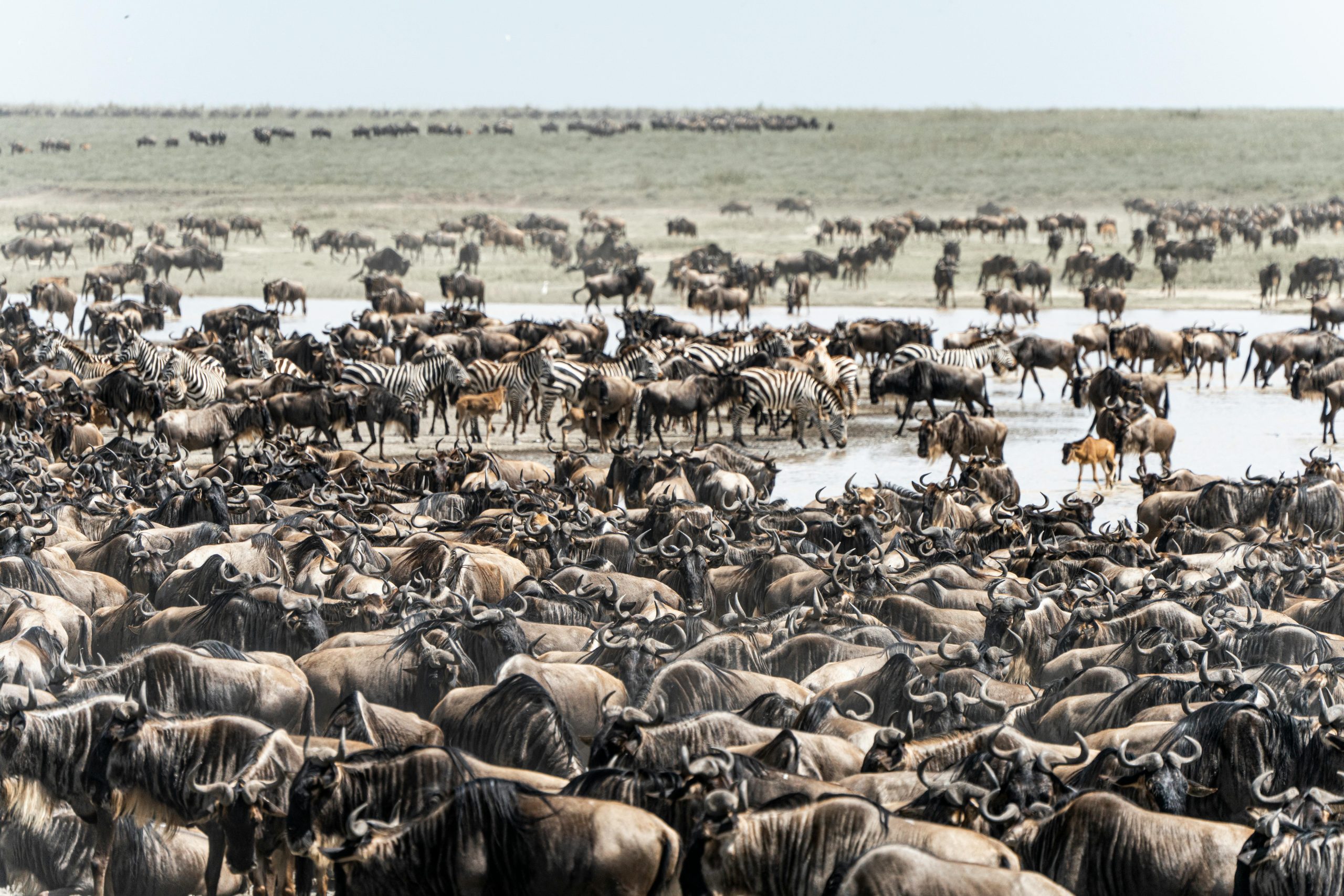
The Great Wildebeest Migration is an annual cycle of movement that takes place between Tanzania’s Serengeti National Park and Kenya’s Maasai Mara National Reserve. It is a never-ending journey dictated by rainfall and food availability, ensuring the survival of millions of animals.
The Migration Cycle: Month by Month Breakdown
January - March: Calving Season (Southern Serengeti, Tanzania)
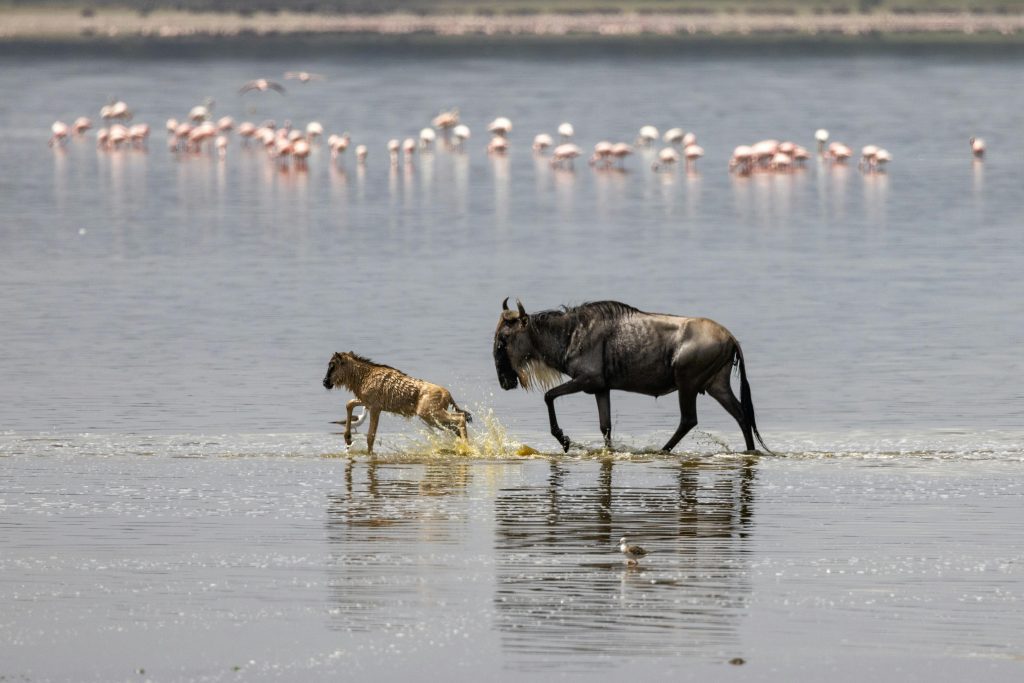
Hundreds of thousands of wildebeest give birth in the Ndutu Plains.
Predators like lions, cheetahs, and hyenas take advantage of the vulnerable young.
A fantastic time for witnessing predator-prey interactions and newborn animals.d
April - May: The Long Rains and Movement North
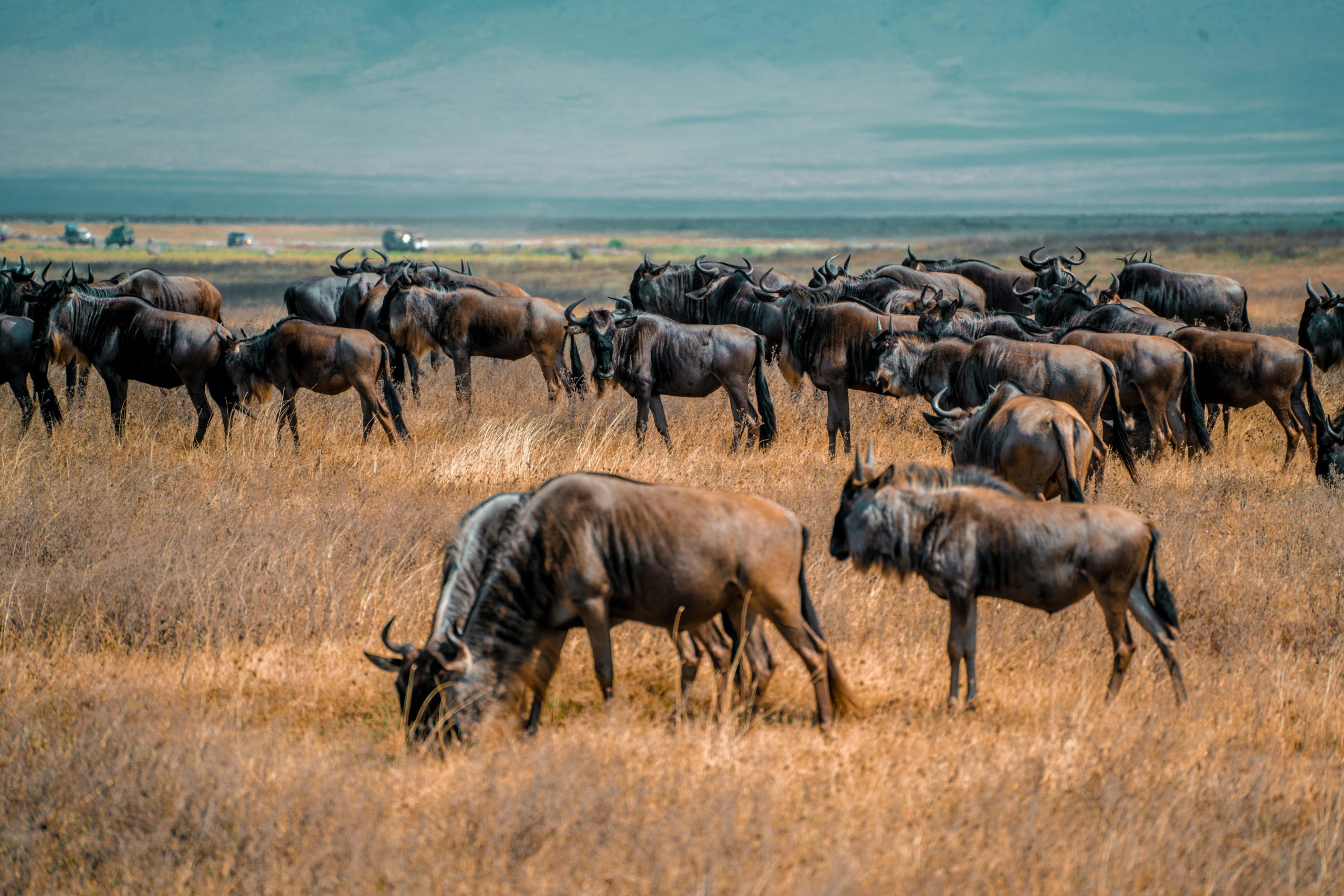
As the plains dry up, the herds start moving northward.
Lush landscapes provide excellent photographic opportunities.
Lodges and camps are less crowded, making it a more budget-friendly period.
June - July: Grumeti River Crossing (Western Serengeti, Tanzania)
Wildebeest face their first major obstacle: the Grumeti River.
Large crocodiles lie in wait, making for dramatic river crossings.
The herds continue their journey toward the Mara River.
July - October: The Maasai Mara River Crossing (Kenya)
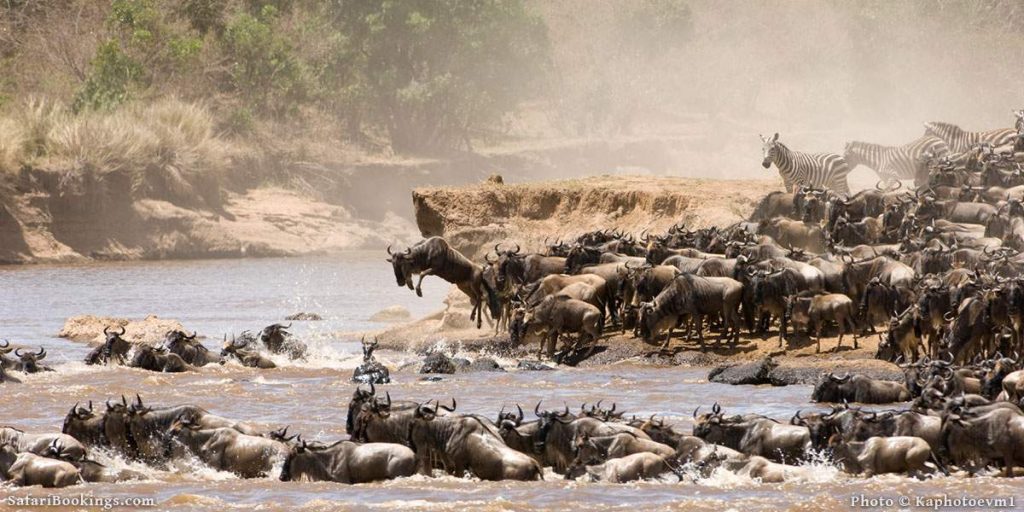
The most famous and thrilling part of the migration.
Thousands of wildebeest plunge into the Mara River, facing strong currents and hungry crocodiles.
The Maasai Mara is teeming with big cats, making this a prime time for safaris.
November - December: Return To the Serengeti
The short rains trigger the movement back to Serengeti’s southern plains.
The cycle begins again as the herds prepare for the next calving season.
Where To Witness The Great Migration?
1. Serengeti National Park (Tanzania)
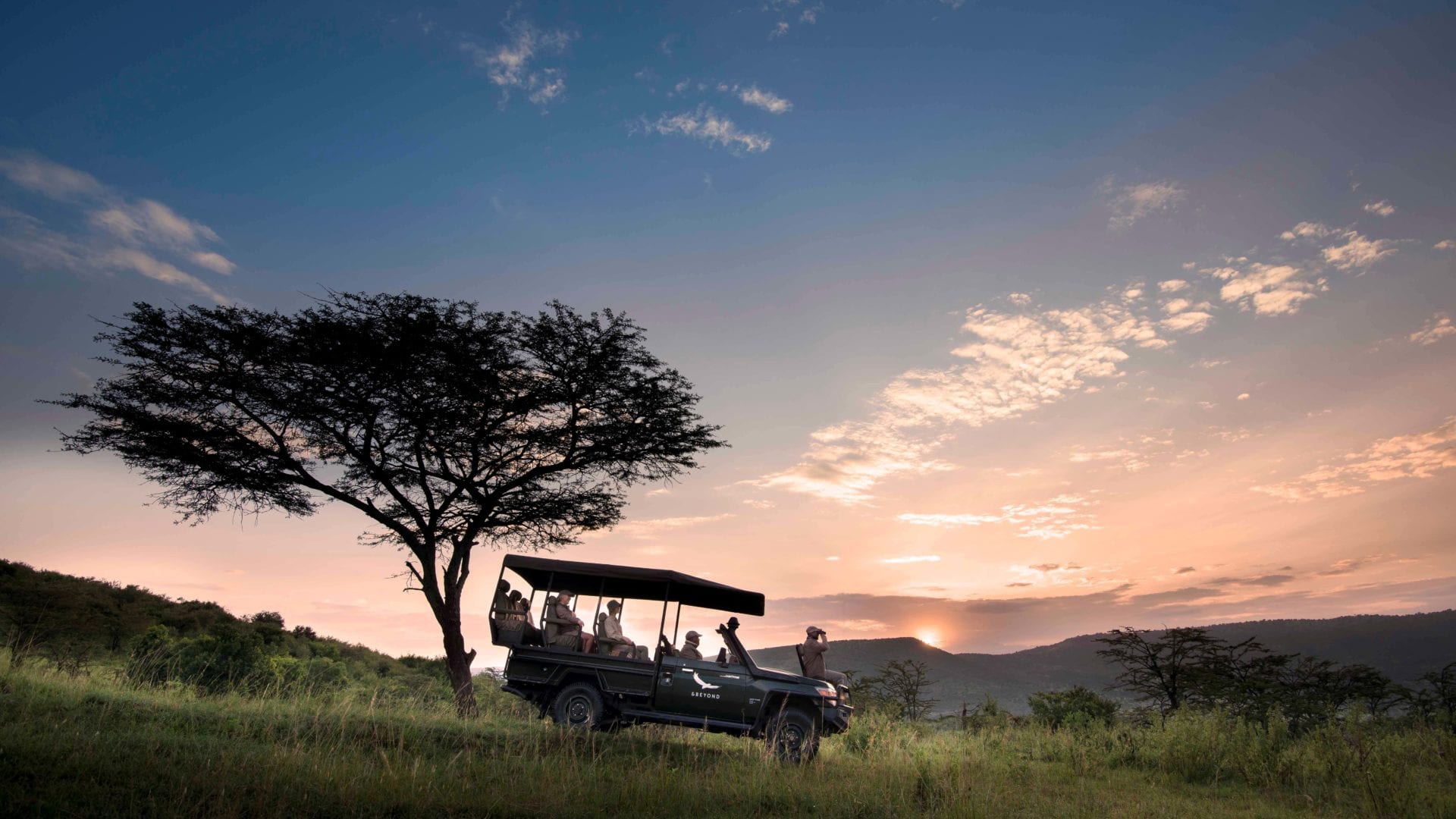
Ideal for viewing the calving season (January–March) and Grumeti River crossings (June–July).
Home to vast plains and a rich predator population.
2. Maasai Mara National Reserve (Kenya)
Best for witnessing dramatic Mara River crossings (July–October).
High concentrations of lions, leopards, and cheetahs.
Offers diverse landscapes and excellent photographic opportunities.
How To Experience The Great Migration?
1. Game Drives
The most popular way to track the migration.
Experienced guides follow the herds and position vehicles for the best viewing opportunities.
2. Hot Air Balloon Safari
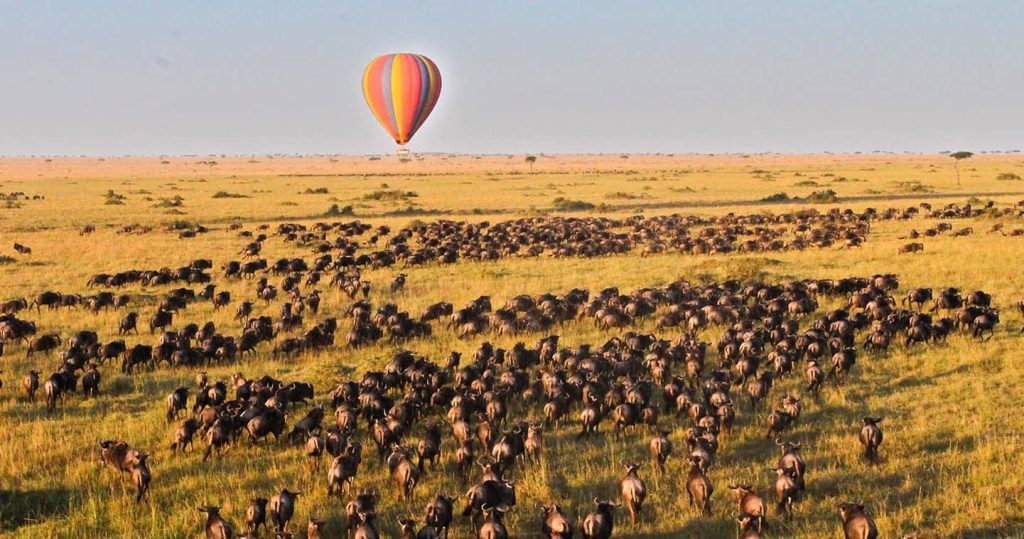
Offers a breathtaking aerial view of the vast herds and dramatic river crossings.
A peaceful yet thrilling way to experience the migration.
3. Guided Walking Safaris
Available in select areas for a more immersive experience.
Allows travelers to appreciate the smaller details of the ecosystem.
Best Time To Visit For The Great Migration?
July – October: For the dramatic Mara River crossings in Kenya.
January – March: For the calving season in Tanzania.
June – July: For the Grumeti River crossings in Tanzania.
Final Thoughts
The Great Wildebeest Migration is a once-in-a-lifetime experience that showcases nature’s raw beauty and survival instincts. Whether you witness the intensity of river crossings or the miracle of newborn wildebeest, every moment is unforgettable.
📌 Ready to witness the world’s greatest wildlife spectacle? Contact us today to book your Great Migration safari!
